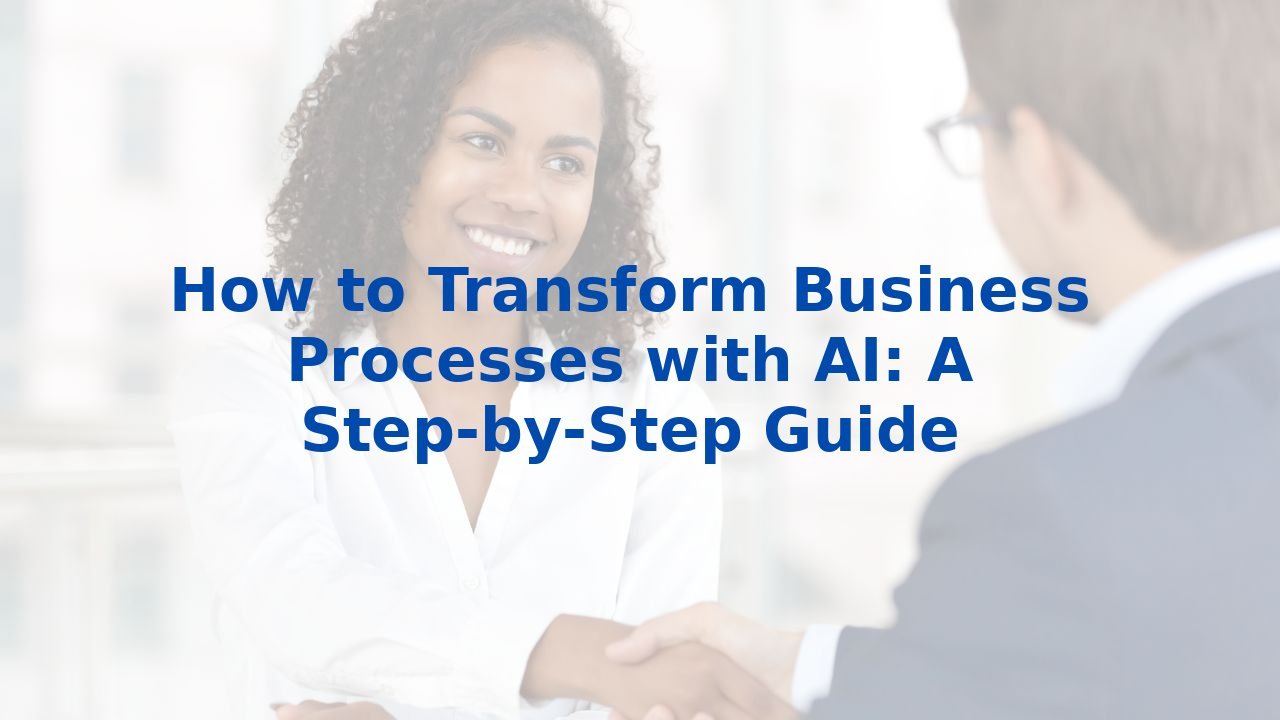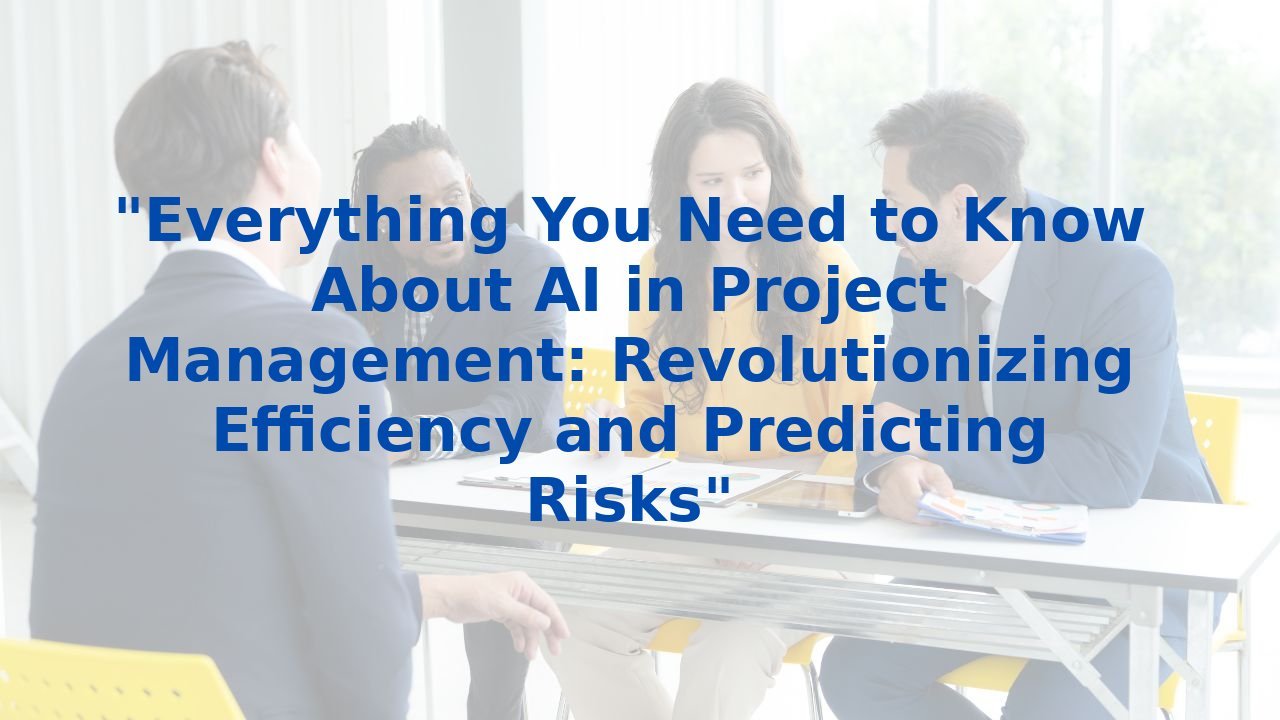How to Transform Business Processes with AI: A Step-by-Step Guide
How to Transform Business Processes with AI: A Step-by-Step Guide
In the fast-speaking rhythm of today's business landscape, the quest for efficiency, cost reduction, and enhanced decision-making is at the forefront of organizational strategies. Enter Artificial Intelligence (AI), a transformative force that is revolutionizing the way we approach Business Process Management (BPM). By employing AI, businesses can refine their processes, turning challenges into opportunities. This guide will walk you through how to enhance business processes with AI and the undeniable benefits that come along.
Understanding Business Process Management (BPM)
BPM isn't just a buzzword; it's the lifeblood of successful organizations. A critical management tool since the 1980s, BPM involves the systematic analysis and improvement of workflows to optimize efficiency. With stages including process discovery, mapping, automation, and continuous improvement, BPM sets the groundwork for transformative change. Now, let's explore how AI seamlessly fits into this framework.
How AI Enhances Business Processes
1. Process Discovery and Mapping
AI takes process discovery to new heights. Utilizing technologies like process mining and natural language processing, AI identifies existing workflows and unveils inefficiencies that even the keenest human eye might miss. With the ability to visualize workflows, AI creates detailed process maps that not only highlight inefficiencies but also act as dynamic blueprints, ensuring your documentation stays current and actionable.
2. Process Automation
What if your team could focus on strategic initiatives rather than on repetitive tasks? Enter AI-driven automation. By taking the reins of repetitive rule-based tasks, AI liberates human resources to engage in value-adding activities. Additionally, real-time monitoring tools powered by AI stay on alert, tracking key performance indicators and facilitating timely interventions to prevent bottlenecks.
3. Predictive Analytics and Risk Management
Predictive analytics is one of AI's most striking capabilities. By analyzing historical data, it anticipates future outcomes, allowing businesses to address potential issues before they manifest. Imagine being equipped to identify emerging bottlenecks or gauge the potential impact of process changes ahead of time—this is the advantage that AI brings to the table.
4. Decision Support and Optimization
In a world teeming with data, decision support systems leveraging AI offer a guiding light. By simulating various scenarios and suggesting optimal choices, AI empowers leaders to make informed decisions. Furthermore, with the ability to autonomously make decisions based on patterns, AI enhances the speed and accuracy of the decision-making process, minimizing human error.
5. Customer Service Enhancement
In the realm of customer service, AI shines brightly. Chatbots serve as the first line of defense in addressing customer inquiries, enhancing the overall customer experience through swift response times. Moreover, AI tools that assess the quality of human interactions ensure that service standards remain high, elevating the customer experience with efficient, personalized support.
6. Manufacturing and Product Development
In manufacturing, AI fosters breakthroughs in efficiency. Collaborative robots (cobots) work alongside human operators, creating a synergy that optimizes workflow. In product development, generative design software powered by AI revolutionizes the design process, exploring all possible designs that meet specific criteria while conserving time and resources.
Benefits of AI Integration
The benefits of integrating AI into business processes are profound:
- Improved Efficiency: Through automation, businesses can minimize manual labor and errors, allowing employees to redirect their focus towards strategic growth.
- Enhanced Decision-Making: With AI's predictive recommendations and scenario simulations, organizations are empowered to make well-informed decisions that drive results.
- Real-Time Monitoring: AI facilitates real-time oversight of processes, ensuring prompt action when deviations occur.
- Cost Reduction: By decreasing the incidence of errors and automating time-consuming tasks, AI plays a pivotal role in reducing operational costs.
The Importance of Employee Training
While deploying AI is essential, the real power lies in maximizing its potential through effective employee training:
- Understanding AI Capabilities: Employees must grasp the functionalities of AI tools, recognizing both their capabilities and limitations.
- Adapting to New Tools: Continuous training ensures that team members can efficiently leverage new AI systems, fostering synergy between human talents and AI capabilities.
- Upskilling and Reskilling: As AI technologies evolve, empowering employees with new skills—such as data analysis—ensures they remain relevant and invaluable in an AI-driven world.
Conclusion
The revolution that AI brings to the business process landscape is not just about technology; it’s about reshaping the very fabric of how organizations operate. Integrating AI into BPM embodies a future where efficiency, decision-making, and overall productivity thrive. However, the journey doesn’t end with technology. A commitment to employee training is vital, enabling organizations to harness the full power of AI and creating a harmonious workspace where human ingenuity and AI innovation contribute to long-term success.
To take your first step towards a transformative future, consider investing in AI training and certification programs tailored for your organization. Make AI part of your business DNA, enhancing not only processes but empowering your workforce to excel in a world driven by technology.



